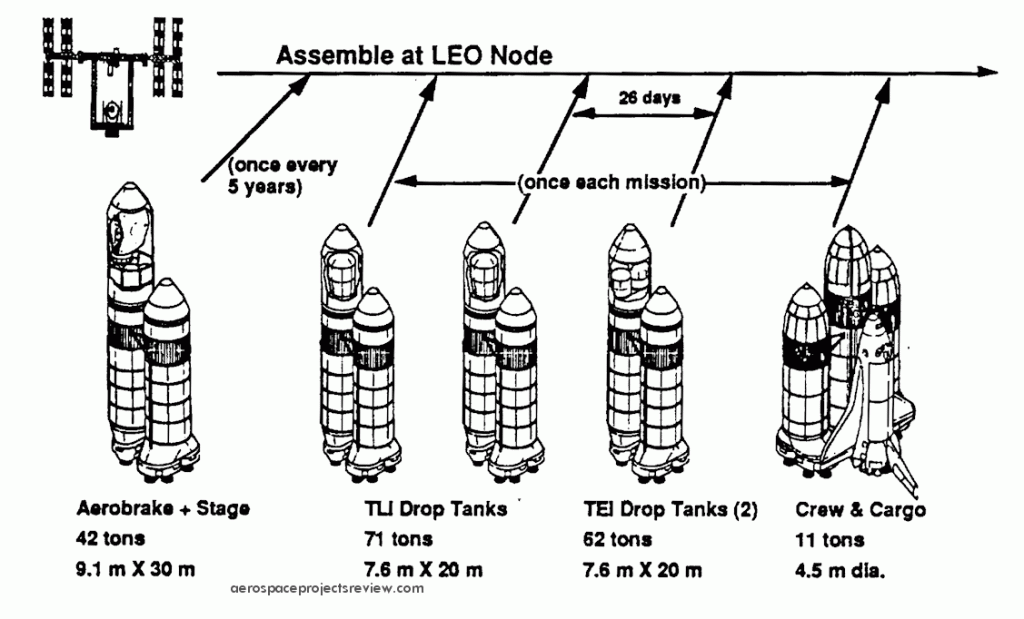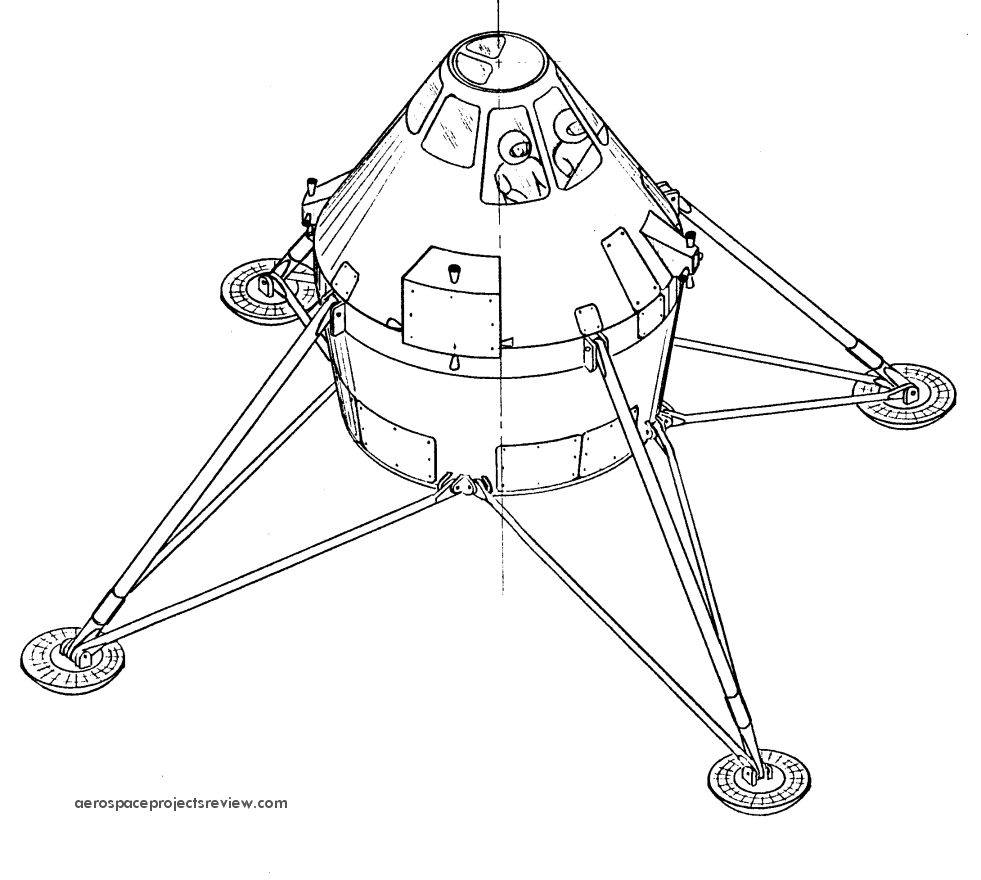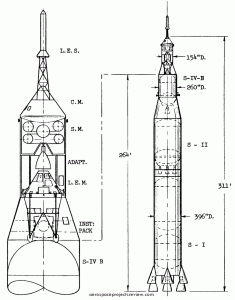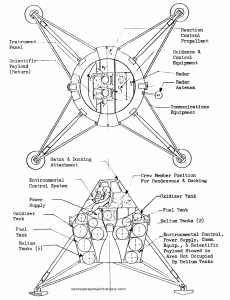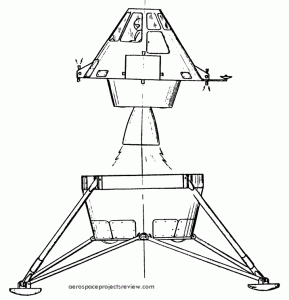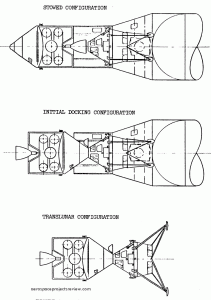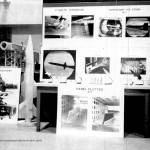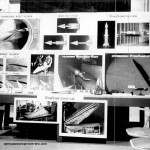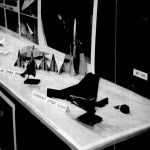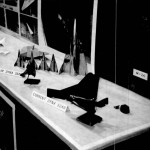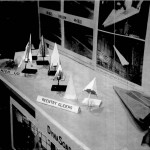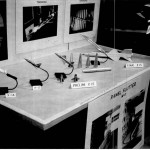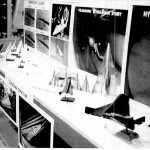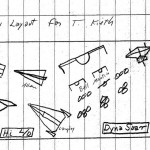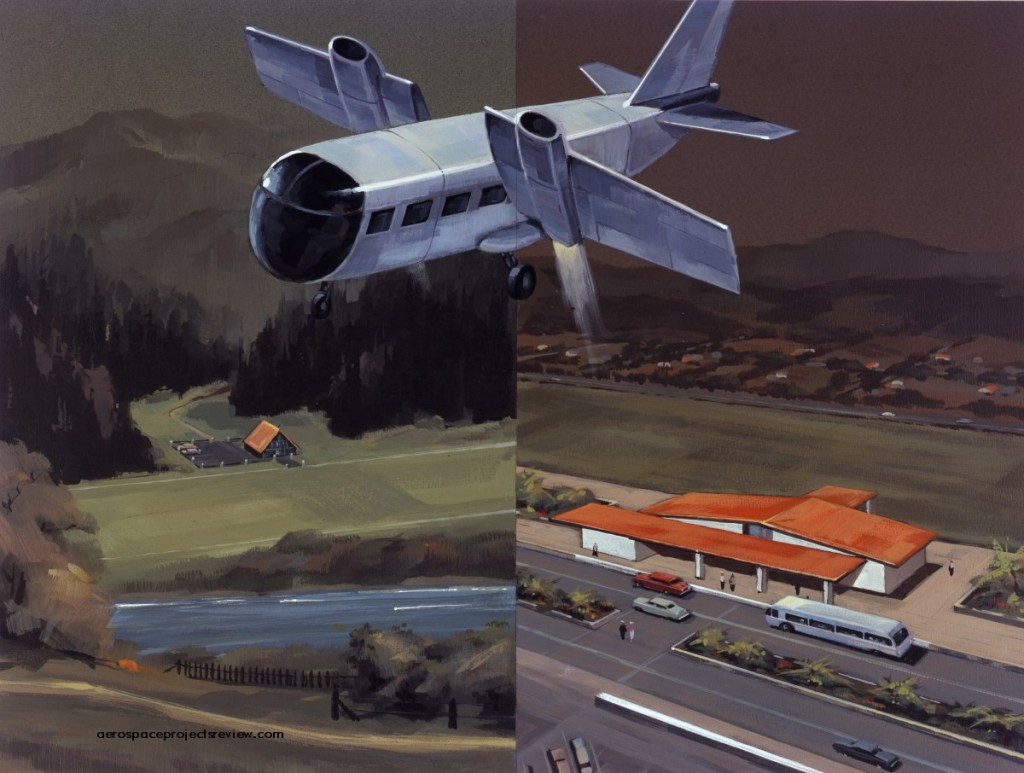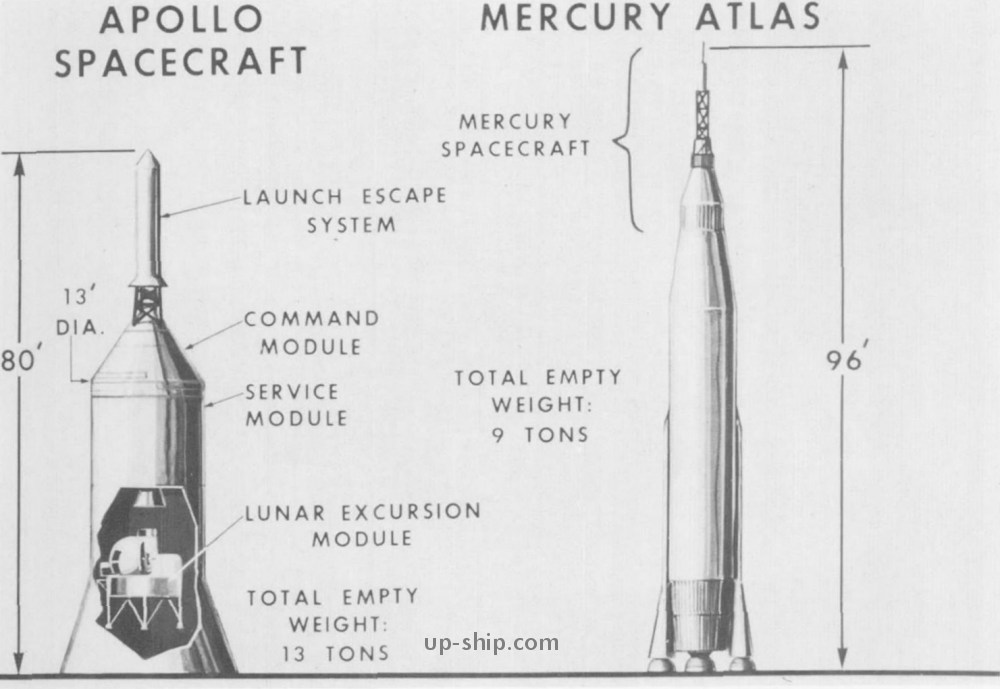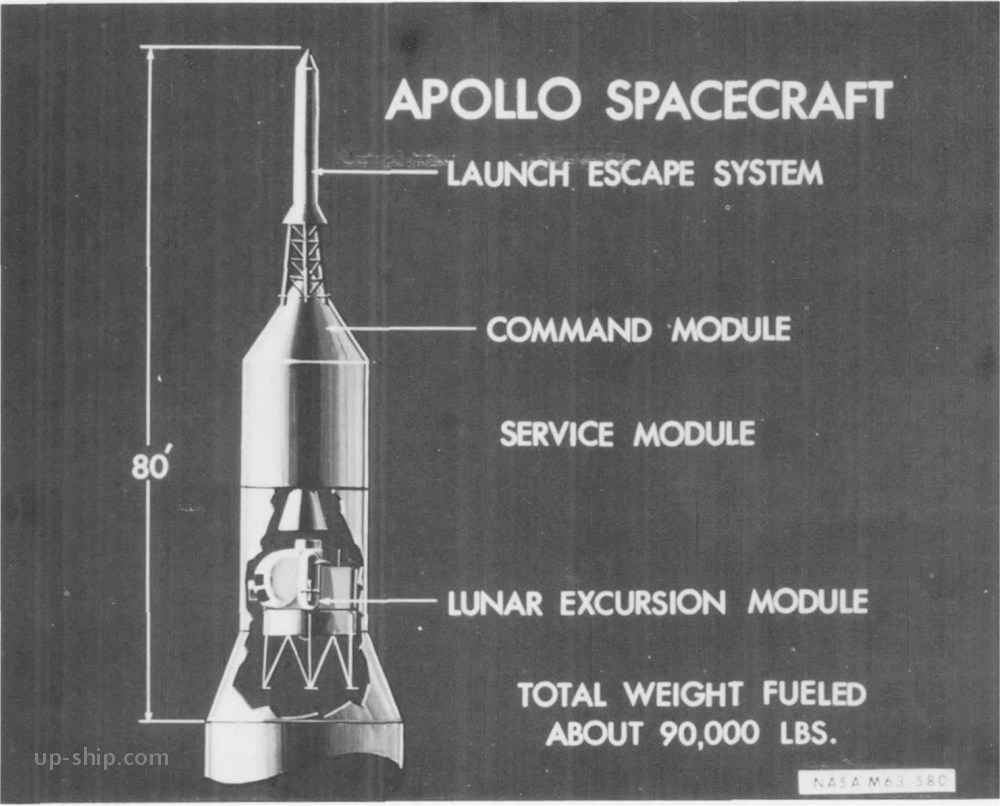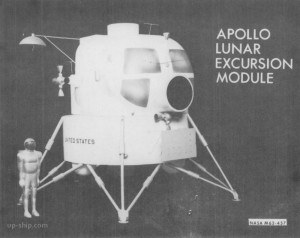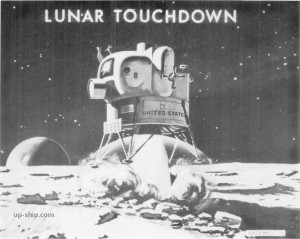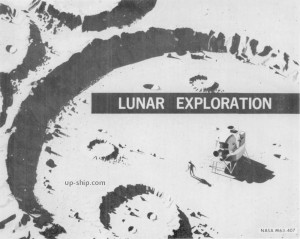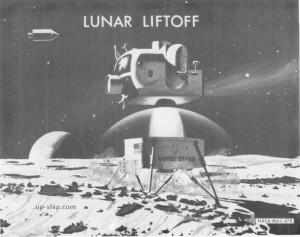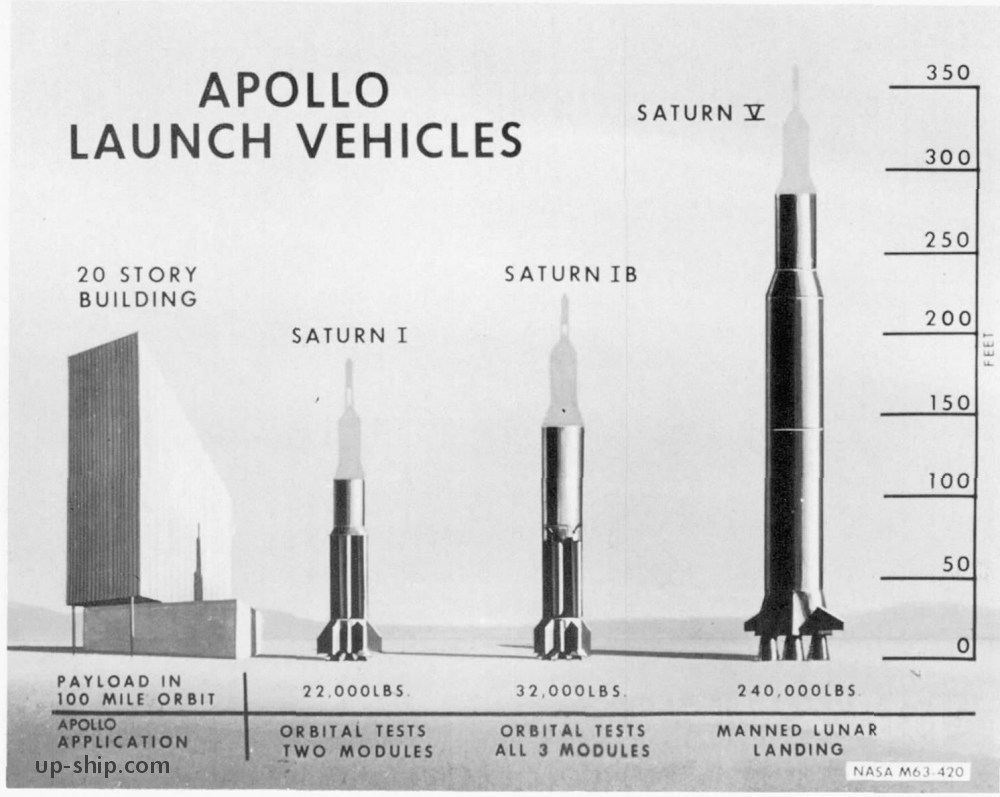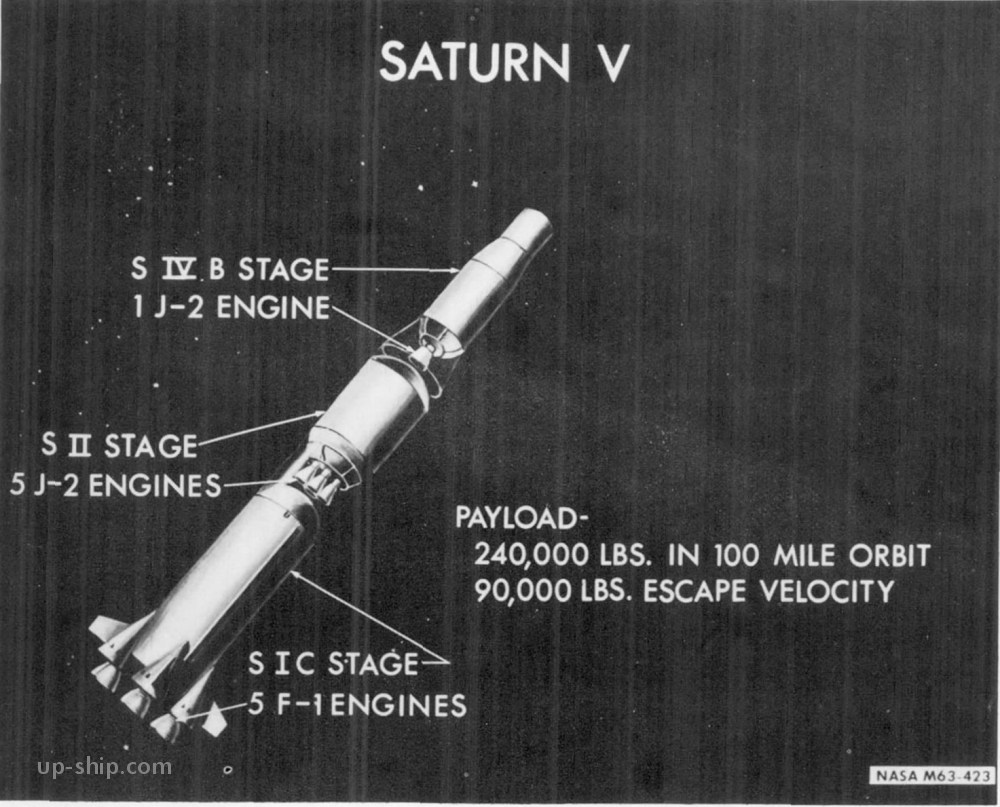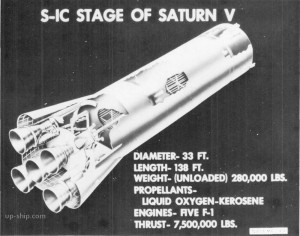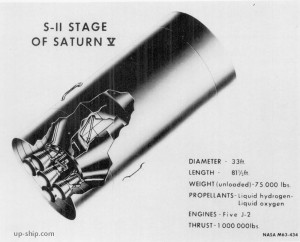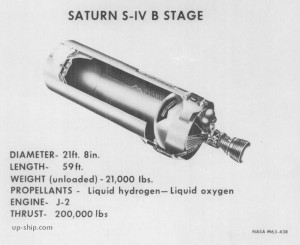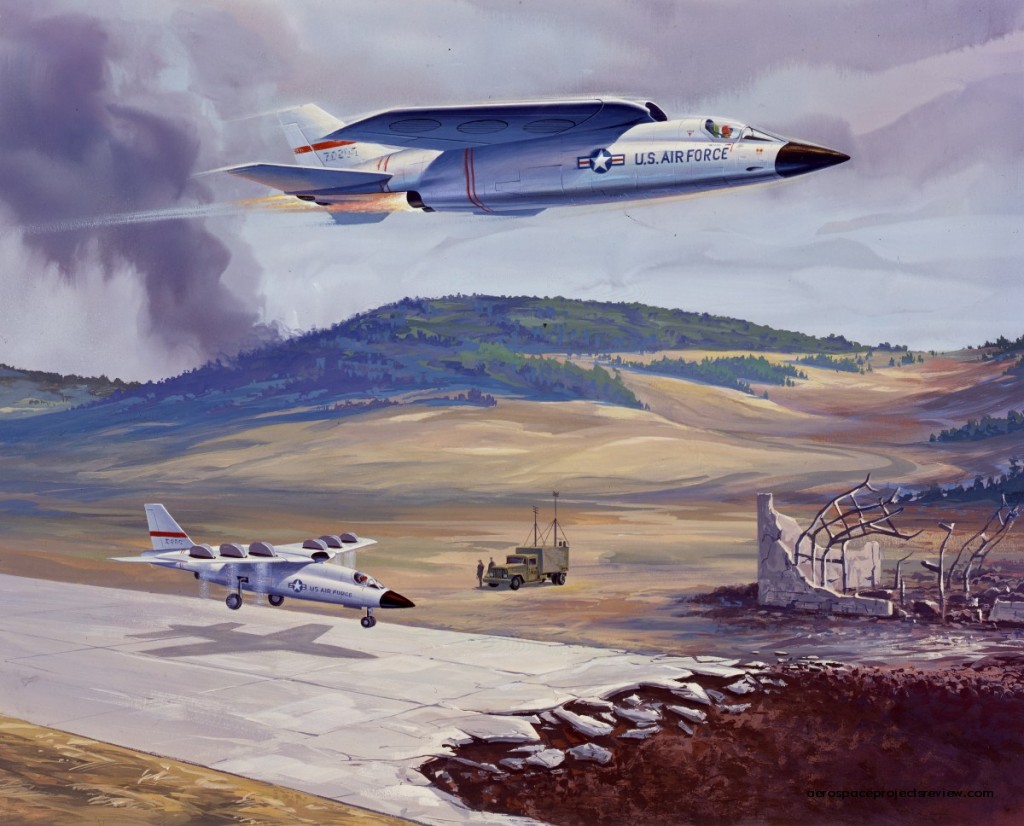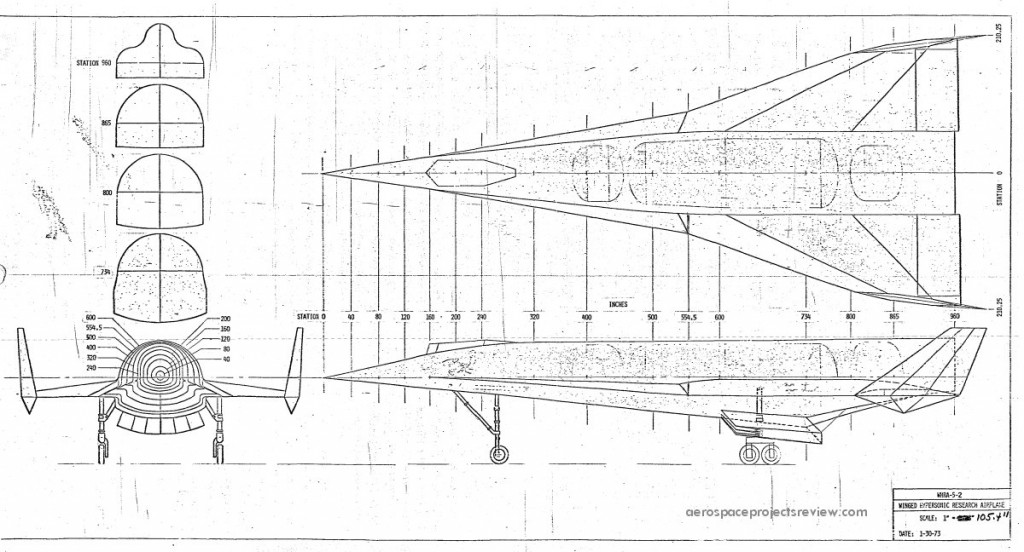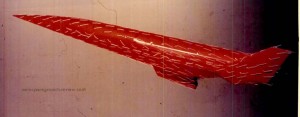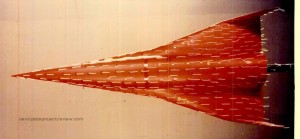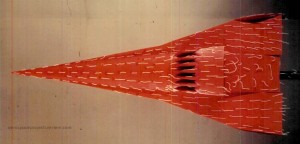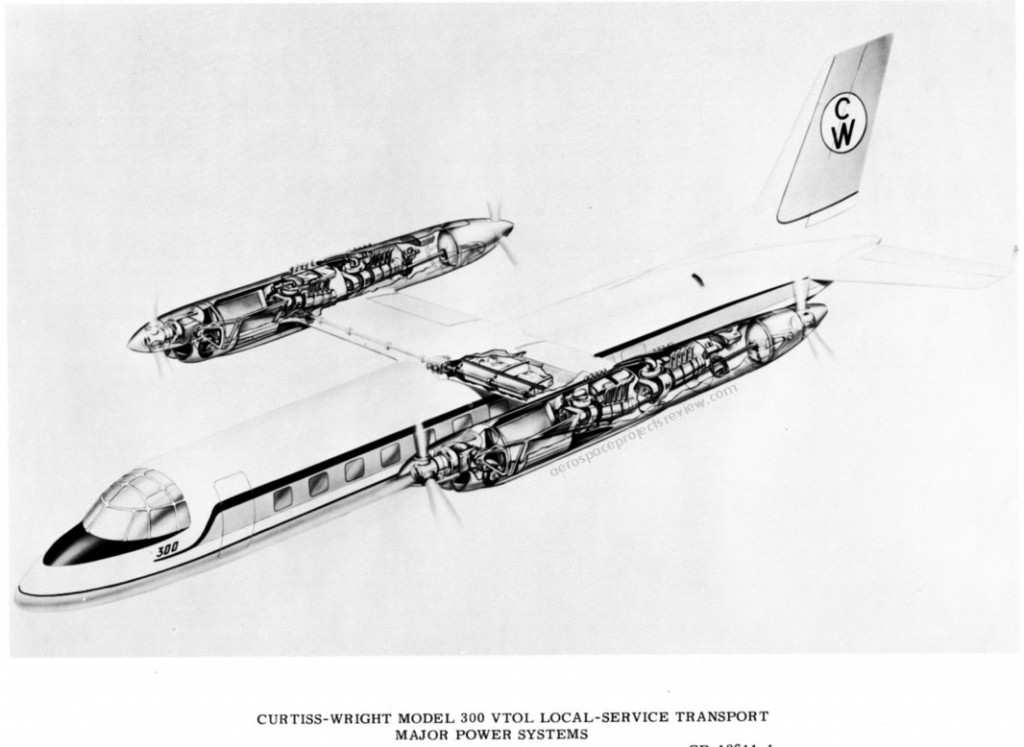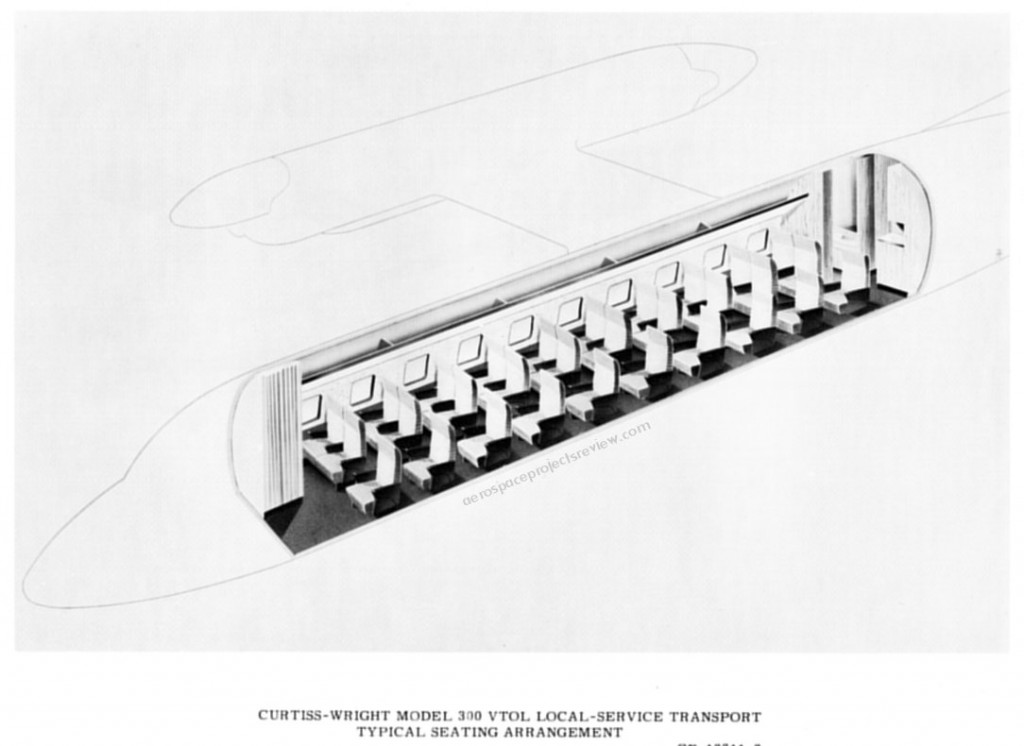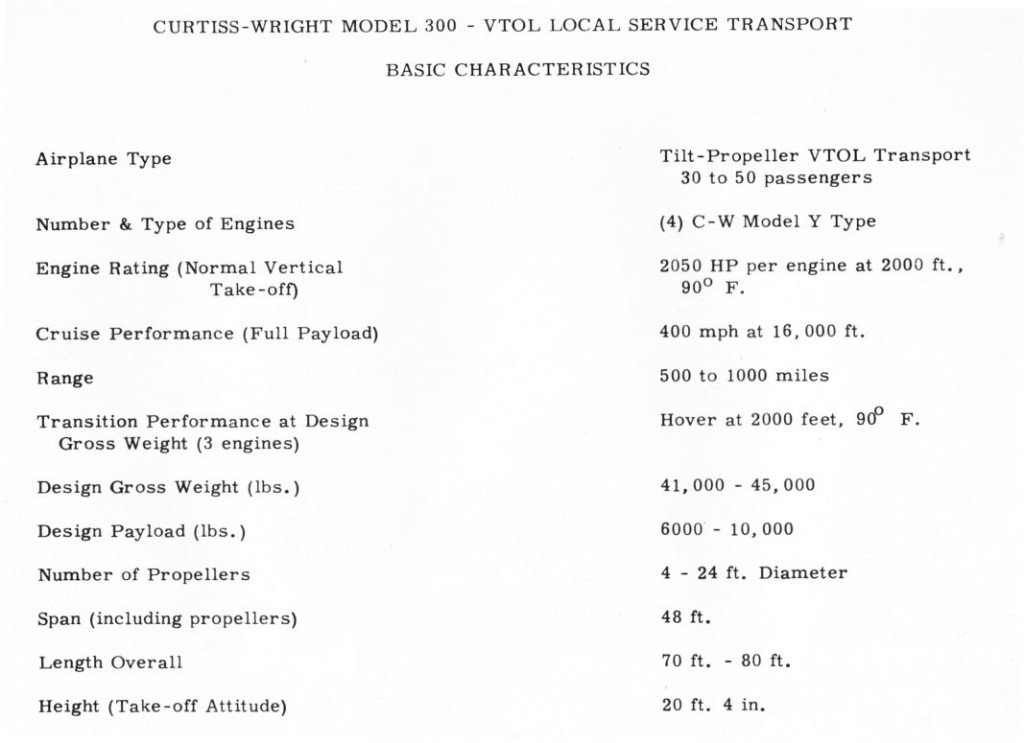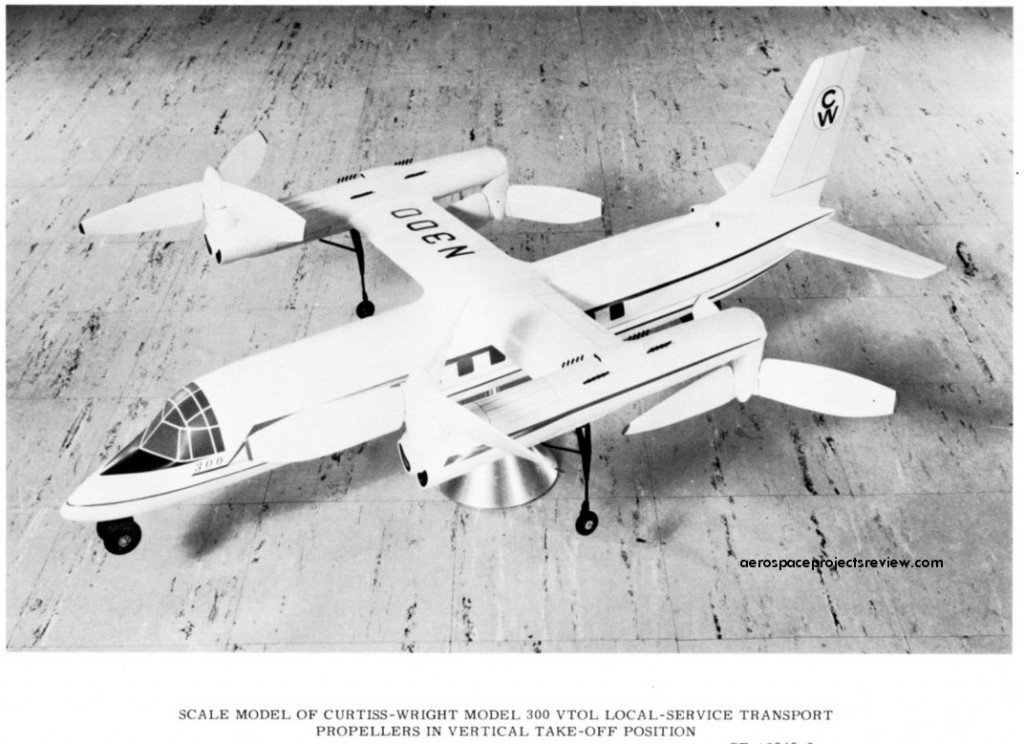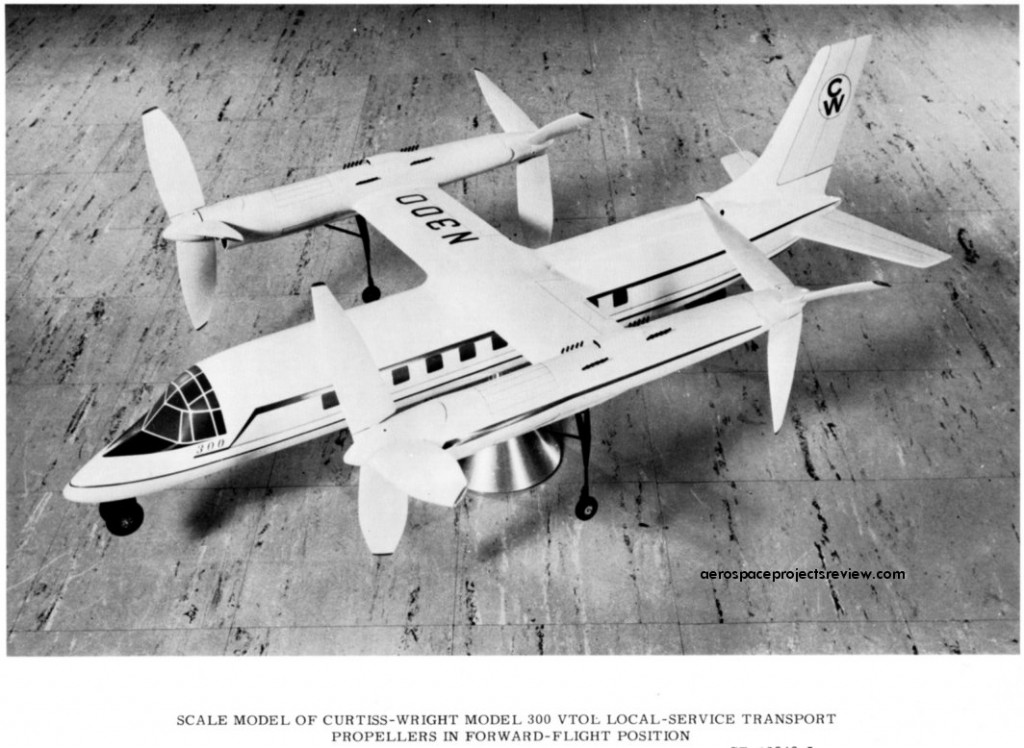In 1993 Boeing designed a modular heavy lift launch vehicle for a range of space launch missions. The core vehicle was based on Shuttle External Tank components, with a multitude of SSME’s at the rear (in two recoverable pods). Shown here are some basic launchers built from these components, being used to launch parts for a lunar mission into Earth orbit. The Shuttle is shown with the solid rocket boosters replaced with the new core vehicles.
A concept for the Lunar Excursion Module, reported on in May of 1962. It seems to have originated with Maxime Faget (of Mercury capsule design fame) at the Manned Spacecraft Center in Houston. It is interesting not only for its conical shape, but also far is basic layout… as with the Soviet LK lander, this design features a single main propulsion system that fires through a “hollow” landing stage. The Soviet design packed all the propulsion tanks into the ascent stage; this NASA design had distributed tanks. This would make the ascent vehicle lighter, at the expense of plumbing complexity. Propellants were N2O4 oxidizer and either MMH or 50% N2H4 + 50% UDMH.
This vehicle would weigh 23,959 pounds at separation from the Command Module; 11,204 at landing. At liftoff – after leaving behind the landing stage – it would weight 7,068 pounds; at burnout, 3,568 pounds.
From sometime around 1963, a few photos of wind tunnel models at NASA-Langley. Shown are a range of Dyna Soar models, from pre-Dyna Soar “HYWARDS” concepts to the initial Boeing 844 design to the final Boeing Model 2050E configuration.
A piece of North American Aviation promotional artwork depicting a VTOL transport aircraft. It’s not clear if this design was a “real” design, or just artistic license. In either event, it depicts a jet-equipped tilt-wing design with four engines, with the wing pivot point disturbing close to the passenger cabin. It would be an incredibly loud vehicle for the passengers.
It depicts a type of aircraft that the mid 1960’s thought would soon be popular… a VTOL “bus” for relatively short range flights. It is shown here seemingly operating between a transit hub just outside of the suburbs and a very small vertiport in the mountains, presumably near a resort.
The Apollo Command, Service and Lunar modules, from 1963. The CSM is largely recognizable, but the lunar module is quite different from what actually got built. The ascent stage, for instance, still features very large – and very heavy – windows for the crew to look out of. This was due to the fact that the crew at this time were seated during landing, putting them well back from the windows.
A piece of artwork from North American illustrating a vertical takeoff and landing aircraft. This was clearly intended for high speed… not only does it have four turbojet engines for forward thrust, if also have variable sweep wings. The complexity here is that the wings have embedded lift fans, probably driven be high pressure exhaust gas from two or more of the main turbojets. The ductwork would be impressive.
Role is unclear, but it appears to be a fighter or strike-fighter. Indications of weapons bays on the fuselage underside; at least one forward-firing gun. No other data available.
Long before the “Aurora” was flying across the pages of sensationalist magazines at Mach 6+, NASA was studying a range of hypersonic research aircraft. While the designs different, sometimes wildly, there were occasional configurations remarkably like the hypothetical “Aurora.” Some would argue that that means that the “Aurora” was derived from this earlier NASA work, but a more reasonable supposition is that those who envisioned “Aurora” were drawing upon public representations of the earlier NASA work in order to dream up what Aurora must look like.
One such design that is very representative of the iconic “Aurora” image is this Hypersonic Research Airplane configuration from 1973, shown here as a drawing and as a NASA-Langley subsonic wind tunnel test model. The aircraft was powered by liquid rocket engines in the tail and an underslung scramjet pod. It had a cockpit that would raise up at low speed so the pilot could see to land, but was otherwise a very clean configuration.
One of the last aircraft proposed by the Curtis-Wright company (early 1960’s), this version of the Model 300 featured a single main wing with wingtip engine pods. Each pod contained to Wankel rotary internal combustion engines; each engine drove a broad-bladed propeller (one at the front of the pod, one at the rear) of the type that had been successfully demonstrated on the Curtis-Wright X-19 VTOL aircraft. In order to attain vertical lift, the forward propeller would tilt up, the aft propeller would tilt down.
At the time, there was considerable interest in fast short-ranged VTOL transport. The idea was that small VTOL aircraft would operate from various small “ports” in and around major cities, flying to and from the nearest major airport (along with other transportation hubs). The VTOL would provide a bus service for the busy businessman on the go, who might need to leave his office in a hurry and catch the next jetliner to, say, London. While no VTOL aircraft such as the Model 300 were built and put into service for this role, several attempts to fill the “VTOL bus” role were attempted with helicopter, but due to noise and cost the concept never caught on.
